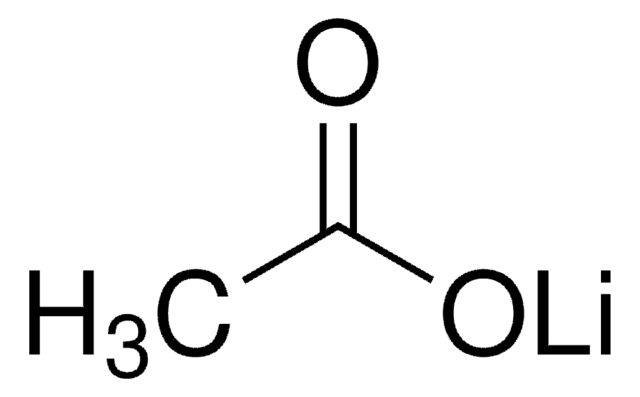14422
Zinc chloride
puriss., meets analytical specification of Ph. Eur., BP, USP, 98-100.5%
Synonym(s):
Dichlorozinc
About This Item
Recommended Products
vapor pressure
1 mmHg ( 428 °C)
Quality Level
grade
puriss.
Assay
98-100.5%
form
crystalline powder
quality
meets analytical specification of Ph. Eur., BP, USP
impurities
heavy metals, complies
oxide chloride (as ZnO), complies
residual solvents, complies
≤0.005% foreign heavy metals (as Pb)
≤0.005% total nitrogen (N)
≤0.03% ammonium (NH4)
≤1% alkalis/earth alkalis
pH
4.6-5.5 (20 °C, 10%)
mp
293 °C (lit.)
anion traces
sulfate (SO42-): ≤200 mg/kg
cation traces
Al:, in accordance
As: ≤2 mg/kg
Ca: ≤100 mg/kg
Ca:, in accordance
Fe: ≤10 mg/kg
Fe:, in accordance
K: ≤200 mg/kg
Mg: ≤100 mg/kg
Mg:, in accordance
Na: ≤100 mg/kg
SMILES string
[Cl-].[Cl-].[Zn++]
InChI
1S/2ClH.Zn/h2*1H;/q;;+2/p-2
InChI key
JIAARYAFYJHUJI-UHFFFAOYSA-L
Looking for similar products? Visit Product Comparison Guide
General description
Zinc chloride is a colorless white compound composed of zinc and chlorine, which can be used as a flux for soldering.
Application
Signal Word
Danger
Hazard Statements
Precautionary Statements
Hazard Classifications
Acute Tox. 4 Oral - Aquatic Acute 1 - Aquatic Chronic 1 - Eye Dam. 1 - Skin Corr. 1B - STOT SE 3
Target Organs
Respiratory system
Storage Class Code
8A - Combustible corrosive hazardous materials
WGK
WGK 3
Flash Point(F)
Not applicable
Flash Point(C)
Not applicable
Certificates of Analysis (COA)
Search for Certificates of Analysis (COA) by entering the products Lot/Batch Number. Lot and Batch Numbers can be found on a product’s label following the words ‘Lot’ or ‘Batch’.
Already Own This Product?
Find documentation for the products that you have recently purchased in the Document Library.
Customers Also Viewed
Our team of scientists has experience in all areas of research including Life Science, Material Science, Chemical Synthesis, Chromatography, Analytical and many others.
Contact Technical Service







